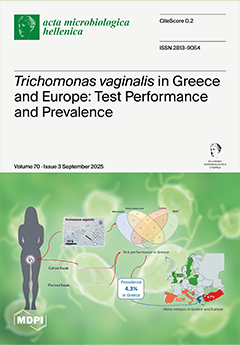Syphilis, which is caused by
Treponema pallidum, remains one of the most common congenital infection worldwide and has tremendous consequences for the mother and her developing foetus if left untreated. The complexity of the exposure to this pathogen extends beyond the well-established clinical manifestations, as it can profoundly affect placental histomorphology. This study aimed to compare
T. pallidum-exposed placental villi structures with healthy placentae at term to evaluate the histomorphological differences using stereology. In this case-control study conducted at term (38 weeks ± 2 weeks), 78 placentae were collected from the hospital delivery suites, comprising 39 cases (
T. pallidum-exposed) and 39 controls (non-exposed), who were gestational age-matched with other potential confounders excluded. Blood samples from the umbilical vein and placental basal plate were tested for syphilis, using rapid diagnostic test (RDT) kits for
T. pallidum (TP) antibodies (IgG and IgM) to classify placentae as exposed to
T. pallidum (cases) and non-exposed (controls). Tissue sections were prepared and stained with haematoxylin and eosin, and the mean volume densities of syncytial knots, foetal capillaries, syncytial denuded areas, and intervillous spaces were estimated using stereological methods. Statistical analysis was performed to compare the mean values between the case and control groups. Stereological assessment revealed significant differences between the
T. pallidum-exposed and non-exposed groups with regard to syncytial knots (
p < 0.0001), syncytial denudation (
p < 0.0001), and foetal capillaries (
p < 0.0001), but no significant difference in the intervillous space was found (
p = 0.1592). Therefore, our study shows, for the first time, that the histomorphology of human placental villi appears to be altered by exposure to
T. pallidum. It will, therefore, be interesting to determine whether these changes in the placental villi translate into long-term effects on the baby.
Full article




